It’s a privilege to watch wildlife in its natural habitat, but particularly so when wildlife is on the move. Observing animals as they migrate is often a spectacle, but one that feels even more special with the realization that such movements have been taking place for thousands of years. From stampeding wildebeest to scurrying crabs, here are six of the coolest animal migrations you can witness with your own eyes.
Wildebeest – Kenya and Tanzania

In East Africa, vast herds of wildebeest undertake a looping annual migration which sees them head north from the Serengeti in Tanzania to Kenya’s Maasai Mara and back again. More than a million wildebeest make the treacherous journey each year. Together with large numbers of other herbivores such as zebras, elands, and gazelles, the wildebeest follow the rains in search of better grazing land.
Along the way, they face significant threats from predators, particularly the perilous crossing of the crocodile-infested Mara River. Lions and hyenas also prey on vulnerable stragglers as the herd pushes relentlessly on. To witness the spectacle yourself, travel to the southern Serengeti between January and March to see thousands of newborn calves. From late April, the herd begins to move north, typically reaching the Maasai Mara by July. By October, the onset of rain prompts the herd to depart for the Serengeti again, completing this remarkable cycle.
Reindeer – Finnmark Plateau, Norway
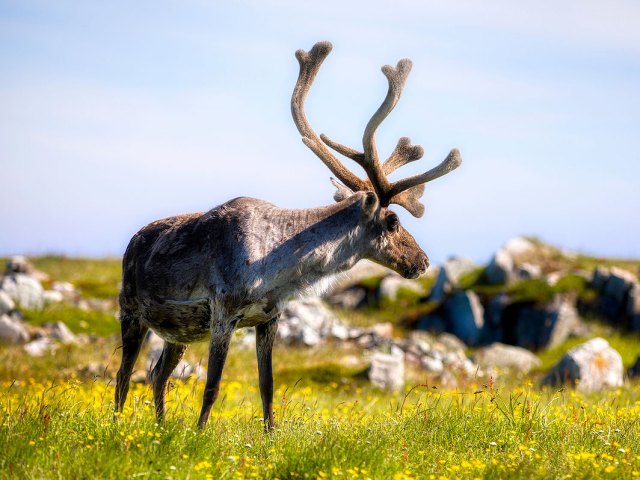
Each year, usually in April or May, the Sámi people of northern Norway continue a centuries-old tradition of transhumance. Using snowmobiles, they drive their reindeer over the Finnmark plateau. However, it’s the animals themselves that dictate when this epic journey begins, as they have for thousands of years — long before the Sámi tamed them.
In winter, reindeer use their hooves to scratch through the fluffy snow in search of nutrient-rich lichen. In summer, however, this precious vegetation needs a chance to recover, so the reindeer migrate towards the ocean to feast on tasty new grass. The weather dictates the pace — traveling by night can be easier, as an icy crust falls on the snow, while in the warmth of the afternoon, slush makes progress difficult. As the reindeer take a break, the Sámi herders sleep in a traditional tent called a lavvu, fueling up on reindeer stew and Arctic char and trout fished through the ice. Visitors are welcome to accompany the herd, so long as they pull their weight.
Red Crabs – Christmas Island, Australia
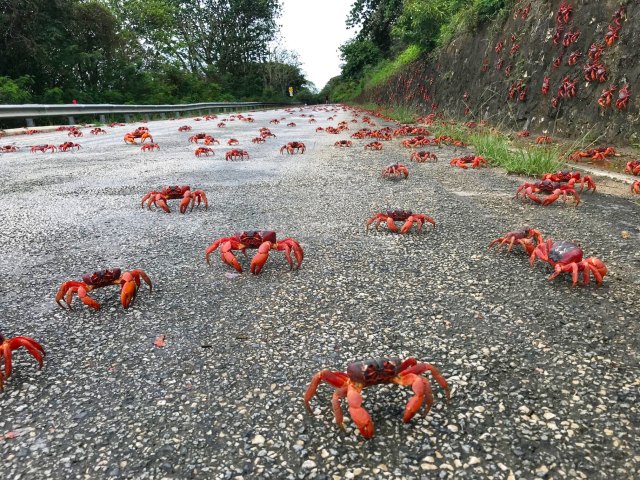
Named for its discovery by explorers on Christmas Day, Christmas Island is Australian territory located about 215 miles south of Indonesia in the Indian Ocean. The island is famous among nature lovers for its red crab migration, which occurs annually in the northeast part of the island. The onset of the rainy season (typically in October or November) prompts these brightly colored crustaceans to take to the road — literally. They’re set on one thing, spawning, which must occur during a receding high tide when the moon is in its last quarter.
Time is often of the essence, and if the crabs have waited to feel the rain before setting out, they’ll need to scuttle quickly to meet nature’s deadline. Millions of them make their way from the island’s forested interior, crossing whatever’s in their path to reach the ocean. To help protect them from vehicular traffic, a series of underpasses have been constructed, and, on Murray Road, even a crab-friendly bridge. Roads may close at short notice, but watching on foot is encouraged.
Emperor Penguins – Antarctica
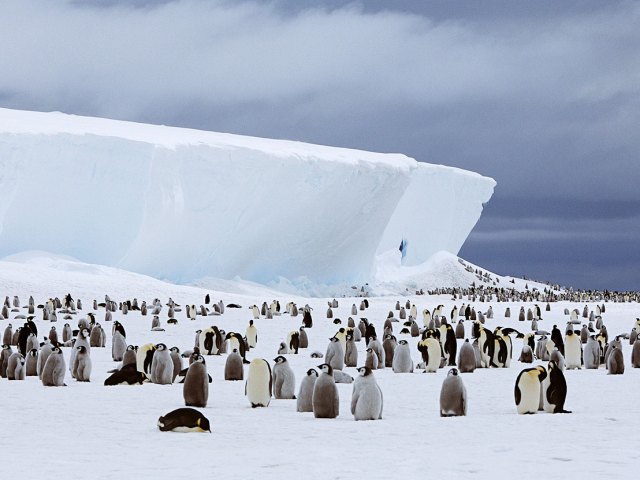
Each March, thousands of emperor penguins trudge as far as 100 miles from the Antarctic coast inland to find a suitable place to breed. Although they return to the same spot each year to raise their young, the route varies as dictated by the shifting sea ice and the obstacles it creates.
After laying eggs, typically in May or June, the female penguins leave them in the capable hands — or rather, feet — of their male partners, who form a collective huddle to protect their unborn offspring from the intense cold and biting winds. The females make that arduous journey to the sea once again, eventually returning after they’ve had time to feed. Once the fluffy chicks are born, the penguins head back out to sea for food, returning to regurgitate some of it to sustain their young.
Pronghorn – Wyoming
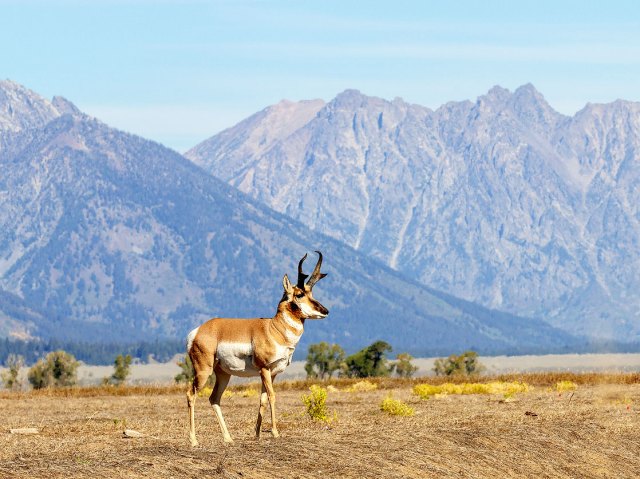
Pronghorn antelopes are found in many U.S. states, and many of them do not migrate. However, in Wyoming, heavy snowfall necessitates migration, as the animals will be unable to find food to sustain them through the winter. As a consequence, these pronghorns migrate for a considerable distance, beginning in Grand Teton National Park and traveling south to the upper Green River Basin, near the town of Pinedale.
The journey varies in length from year to year, but it’s not unusual for the pronghorns to travel more than 150 miles each November, and then tackle the route in reverse the following April. It’s a pattern they’ve followed for at least 6,000 years, but modern-day roads and fences proved hazardous, particularly as pronghorn have evolved to be great runners rather than jumpers. When it was established in 2008, the Path of the Pronghorn became the first federally designated wildlife migration corridor in the country, helping to protect the pronghorns as they moved.
Zebras – Botswana
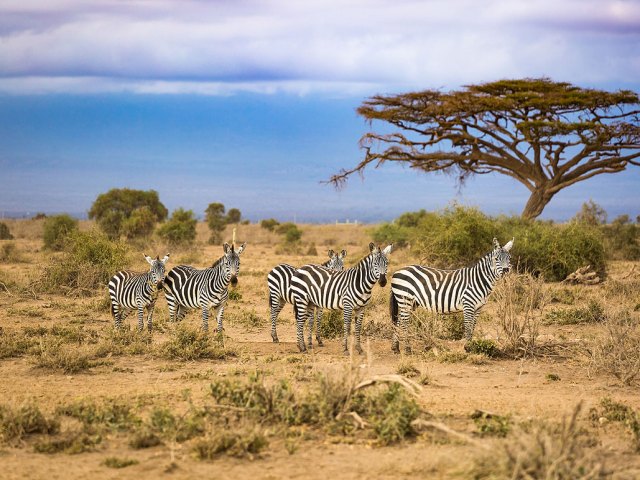
For several decades following Botswana’s independence in 1966, ancient zebra migratory routes were interrupted by fences erected to protect the country’s lucrative cattle from foot and mouth disease. However, when these barriers were removed in 2006, zebras were once again able to follow in the hoof prints of their ancestors. The route taken by these ungulates — from the Chobe River to Botswana’s Nxai Pan National Park — is thought to be the longest mammal migration in Africa, a round-trip journey of more than 620 miles.
Water — and the impact it has on vegetation — is the driving force behind this epic journey. Zebras are herbivores, and the lure of fresh, nutritious grass is worth the considerable effort. Typically, herds will congregate on the Chobe floodplains from June or July to November. As the rains begin to fall in Nxai, around 20,000 Burchell’s zebras set off for the park’s distant salt pans. After a few months, the dry season arrives, forcing them to return to the Chobe River. Visit between December and March to see the spectacular zebras en masse.
More from our network
Daily Passport is part of Optimism, which publishes content that uplifts, informs, and inspires.























